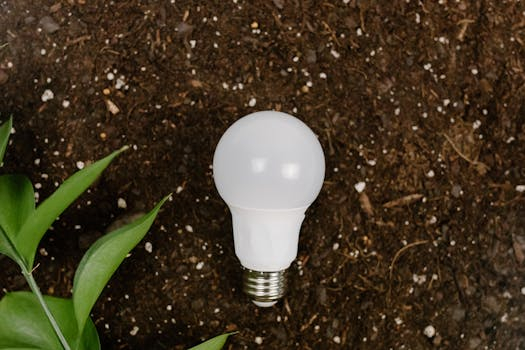Battery Recycling Breakthroughs: Closing the Loop on Lithium
Batteries play a critical role in powering our everyday devices, from smartphones to electric cars. However, as the demand for these devices continues to rise, so does the demand for the materials used in batteries, particularly lithium. While lithium-ion batteries offer long-lasting and reliable power, they come with a significant environmental cost. The extraction, production, and disposal of lithium can have a devastating impact on the environment. To truly close the loop on lithium, we need innovative breakthroughs in battery recycling. In this article, we will explore the latest developments in battery recycling and how they are helping us move towards a more sustainable future.
Understanding the Environmental Impact of Lithium
Lithium is a crucial component in the production of lithium-ion batteries. However, the process of extracting and refining this element comes with various environmental concerns. Mining for lithium involves large-scale land disturbance, leading to deforestation and loss of habitats for wildlife. It also requires a considerable amount of water, which can deplete local water sources and cause contamination. Furthermore, the disposal of lithium batteries is becoming a growing concern, with the potential for toxic chemicals to seep into the soil and water sources.
The Growing Need for Battery Recycling
With the increasing demand for batteries and the limited supply of lithium, the need for sustainable battery recycling has become more pressing. Traditional recycling methods involve melting down the batteries and extracting the valuable materials; however, this process is not efficient and often results in a loss of quality. This is where battery recycling breakthroughs are making a significant difference.
Innovative Battery Recycling Solutions
Direct Recycling
Direct recycling, also known as simple recycling, is a method that involves repurposing used batteries with minimal processing. This is achieved by disassembling the batteries, cleaning and repairing any damages, and reusing them for the same or similar applications. This method can reduce the environmental impact of battery production by minimizing the need for raw materials. It also has the potential to reduce costs and energy consumption by bypassing the refining process.
Hydrometallurgical Recycling
Hydrometallurgical recycling involves using a chemical process to extract valuable materials from batteries. The method involves dissolving the valuable metals, such as lithium, from the battery using a chemical solution. From there, the metals can be recovered and purified for reuse in new batteries. This method allows for a higher yield of valuable materials and reduces the need for mining, making it a more sustainable option.
Pyrometallurgical Recycling
Pyrometallurgical recycling is a method that involves breaking down the battery components using high temperatures. The process involves shredding the batteries into small pieces and heating them in a furnace to separate the valuable materials. This method can be highly efficient at recovering valuable materials but requires a considerable amount of energy, which can affect its sustainability.
Closing the Loop on Lithium
Battery recycling breakthroughs are providing innovative solutions to help close the loop on lithium. These methods are not only more sustainable, but they also offer economic benefits and reduce our reliance on raw materials. This is a crucial step towards creating a circular economy for batteries, where materials can be continuously reused, reducing the environmental impact of production and disposal.
The Role of Technology in Battery Recycling
Technology is also playing a significant role in advancing battery recycling. Artificial intelligence and machine learning algorithms are being used to optimize battery recycling processes, increasing efficiency and reducing costs. Furthermore, blockchain technology is being utilized to track and verify the origin and recycling of batteries, promoting transparency and accountability.
The Future of Battery Recycling
Despite the significant progress, there is still much work to be done in the field of battery recycling. Innovators and researchers continue to explore new methods and technologies to improve the sustainability and efficiency of battery recycling. This includes the development of new recycling techniques for different types of batteries, such as those used in electric vehicles. As the demand for batteries continues to rise, battery recycling breakthroughs will be essential in ensuring a more sustainable future for us and the environment.
Join the Movement
Battery recycling is a pivotal piece in the puzzle towards achieving a more sustainable future. As consumers, we can make a difference by properly disposing of our batteries and supporting companies that prioritize sustainable battery production and recycling. By working together, we can help close the loop on lithium and move towards a circular economy where sustainability is at the forefront of battery production and disposal.
In conclusion, while the demand for lithium-ion batteries shows no signs of slowing down, battery recycling breakthroughs offer a promising solution to mitigate the environmental impact of these essential devices. With innovative methods and technologies, we are one step closer to closing the loop on lithium and creating a more sustainable future for all.





